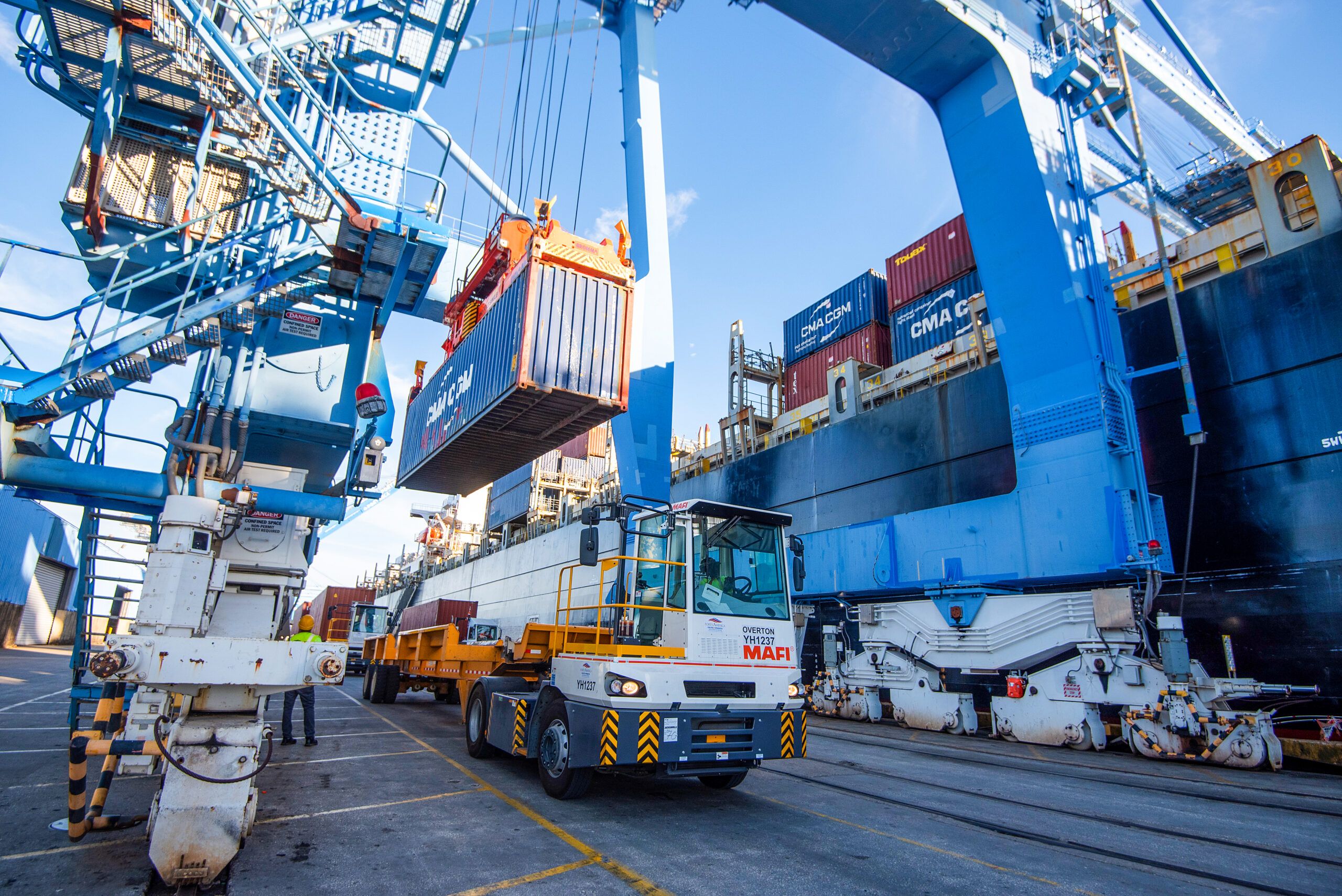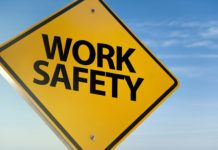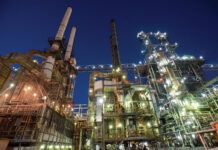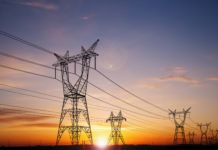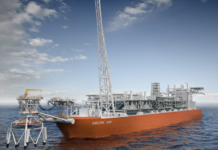South Louisiana’s confluence of waterways, rail, pipelines and interstates was undoubtedly the reason for industry to locate here. Unfortunately, the “to do” list of infrastructure enhancements needed for the state to remain competitive is problematically long.
The $1 trillion federal infrastructure bill, passed in late 2021, provided a glimmer of hope for some of Louisiana’s backlogged projects, as it came with a promise to funnel billions to states and local governments to upgrade outdated roads, bridges and transit systems. Of particular note was the bill’s intention to repair and rebuild thoroughfares and bridges, meliorate airports and ports, invest in passenger rail, improve infrastructure resiliency and fortify the power infrastructure.
For Louisiana, it has freed up funding for some long-delayed, long-overdue projects.
Nevertheless, Shawn Wilson, former secretary of the Louisiana Department of Transportation and Development, says getting the most out of any infrastructure funding measure will require strategic alliances among multiple infrastructure modes. “We need to leverage our resources and work together, whether that be industry, the ports, roads, etcetera to create a plan, and we need to be able to fund that plan to remove bottlenecks and maximize efficiencies,” Wilson says.
Unfortunately, the state must play catchup first. As recent as 2022, Louisiana continued to receive low national marks on its infrastructure—a D+ from the American Society of Civil Engineers—based upon data collected by a team of more than 50 civil engineers who studied 11 major components of the state’s infrastructure for more than 18 months.
That has had dire implications for the industrial sector along the 10/12 corridor. “When you look at our 16,000 miles of roads, 12,000 bridges and six Class 1 railroad and airports … our economy is based upon the infrastructure that we have, not the infrastructure that we need,” Wilson says. “We’re faced with a difficult decision: whether to maintain what we have today or invest in the next five to 10 years in a new mobility solution. It’s a problem brought about by generational inaction.”
Of course, roads and bridges are just one piece of the infrastructure puzzle. Waterways, ports, rail and power each have their “weak links” in need of attention.
Sore spots: Baton Rouge and Lake Charles
There are perhaps no bigger “weak links” in the state than the I-10 bridges in Lake Charles and Baton Rouge. They’re well-known daily sources of congestion, primarily because they were built at a time when traffic counts were significantly lower.
George Swift, president and CEO of The Southwest Louisiana Economic Development Alliance, says it’s no secret that the I-10 bridge replacement in Lake Charles has been a top priority for years. The bridge was initially constructed in 1952 with a predicted 50-year life span and traffic load of 37,000 crossings per day. Today, the average daily crossings exceed 80,000.
“Everyone in industry is concerned about the condition of the bridge,” Swift says. “Even though it’s structurally sound, the bridge is unsafe because of steep inclines, no turnoff lanes and no lights. That’s our number one project, and I’ll put that up against any in the state.”
Highlighting its importance at the federal level, U.S. Secretary of Transportation Pete Buttigieg visited the site in February to announce the awarding of a $150 million grant to help fund the replacement of the outdated bridge. In total, about $800 million has been allocated for the bridge so far.
Unfortunately, the costs continue to escalate.
“The cost estimate was originally $800 million,” Swift says. “Now, it’s $1.5 billion. We’re hoping to get this executed this year, because the longer we wait the more it will cost.”
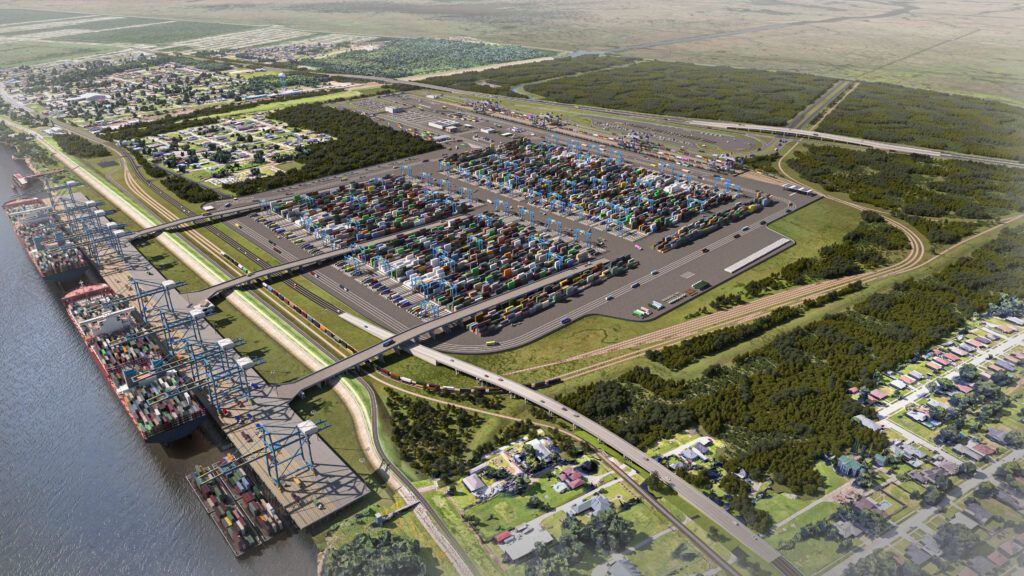
The public-private partnership (P3) project will span from the I-10/I-210 west interchange to the east side of the Ryan Street exit ramp, as well as improve LA 378 from I-10 to Sulphur Avenue in Lake Charles. The state is expected to select a developer for the project by fourth quarter 2023, with construction slated for 2025.
Apart from the bridge, there are other weak links in need of attention, Swift says. “We’ve had billions of dollars of investment in the LNG facilities in Cameron Parish, but we’re relying on a ferry to cross the ship channel,” he adds. “A bridge over the ship channel is what’s needed, but we need to start working on that now, because that could take many years.” He also points to several two-lane feeder roads that need widening to adequately service the industrial market.
No progress has been made on the efforts to date. “It needs to be on our radar,” Swift says, “and it becomes more evident virtually every week.”
Scott Kirkpatrick, executive director for the advocacy group Capitol Region Industry for Sustainable Infrastructure Solutions, or CRISIS, says while there has been some progress among all three “core” infrastructure needs identified by his group in 2016—a new $2 billion I-10 bridge south of Baton Rouge, the $720 million-plus widening of I-10 through Baton Rouge and a $1 billion surface road program—the condition of the city’s infrastructure remains severe.

I-10 through Baton Rouge to the industrial corridor has remained a source of congestion and traffic slowdowns for years, significantly impacting the flow of people, goods and services. “Some progress has been made,” Kirkpatrick says. “The widening of I-10 in Ascension has been completed and that was an early win for us. There are some other surface projects—for example, the I-10/Picou Lane Interchange that’s under way—but we’ll have to wait a while before the full benefits are realized.”
He’s most excited about the “tremendous momentum” building around the proposed new Mississippi River bridge south of Plaquemines. Currently, the project is in Phase 2 of environmental assessments, and the eventual location of the bridge has been narrowed to three locations, all south of Plaquemine and crossing the river into St. Gabriel.
Kirkpatrick expects a final location to be selected within the next two years. “We think the public-private partner solicitation process will begin in 2023,” he adds. “It’s a long process, but DOTD has indicated the process will be begin this year.”
Ascension Parish hopes to be ready for the bridge when the time comes. Robert Burgess, president of the Ascension Chamber of Commerce, says additional infrastructure will be needed in his parish to accommodate the bridge as well as facilitate the construction and operation of a planned RiverPlex MegaPark near Donaldsonville.
An $80 million 8.3-mile, 4-lane highway extending LA 3127 from LA 70 to LA 1 tops the list.
Burgess says it would route freight traffic around Donaldsonville, increase regional connectivity and enhance safety. An additional $22 million LA 1/LA 3127/Energy Transition Parkway Interchange would provide a directional interchange of the three highways, which would benefit the flow of industrial traffic.
They’re still pursuing funding for the initiatives, however. “The proposed LA 3127 Extension project would not only provide access to the planned industrial RiverPlex MegaPark, but also increase regional connectivity to the planned Mississippi River Bridge,” Burgess says.
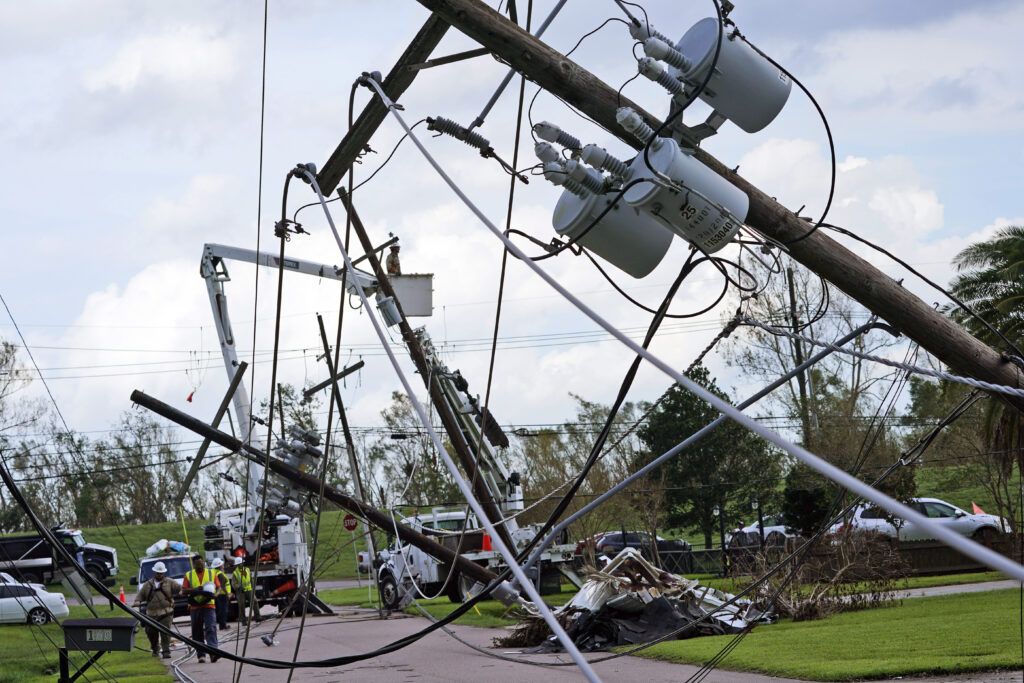
Ports pivot to remain competitive
Meanwhile, Louisiana’s port directors warn that significant port investments will be needed if they are to remain competitive in an increasingly crowded field.
Jessica Ragusa, deputy director of governmental affairs at Port NOLA, says the port’s new $1.8 billion Louisiana International Terminal is their “ace in the hole,” as it will enable the port to accept Panamex and New Panamax mega-vessels and be capable of handling 2 million twenty-foot equivalent units (TEUs) annually. “We’ve already got the 50-foot draft we need thanks to the Corps of Engineers, but if we’re not ready with the terminal we’ll get left out of the game,” Ragusa says. “That’s our top priority right now.”
In December, the facility received $800 million in funding from Ports America and Mediterranean Shipping Company’s investment arm Terminal Investment Limited. The $1.8 billion facility is slated to being construction in 2025 and the berths open in 2028.
“We’ll be able to handle the largest vessel capacities. That’s the need. We’re seeing these vessels starting to come into the market and if we don’t have the facilities to accept them then we’ll no longer be in the container business, and neither will the state of Louisiana.”
PortNOLA is also raising funds for the St. Bernard Transportation Corridor, an elevated expressway that will connect the terminal to major traffic routes.
The port received $50 million from the state’s capital outlay bill last year for the corridor, but Ragusa says that they’ll need to build a comprehensive grant funding strategy as well as pursue other funding strategies such as a toll road.
“The timing is very complex,” she adds. “For example, we might receive a grant but not be able to spend it until 2026, so we’re developing a grant strategy to take full advantage of the opportunities.”
The Port of Lake Charles has its own plans to capitalize on a rapidly changing market, albeit in a decidedly different way. Ricky Self, port executive director, says his biggest future need will be enhancing port facilities to prepare for a burgeoning offshore wind market.
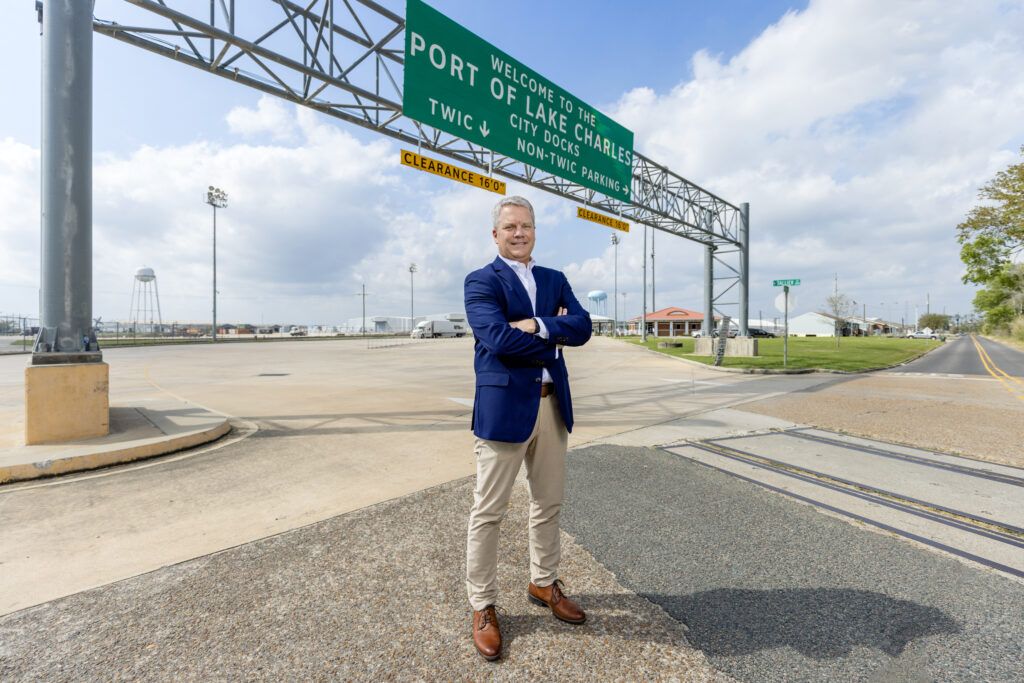
The port’s Industrial Canal site “checks all of the boxes,” Self says. “The Bureau of Ocean Energy Management has proposed the first offshore wind lease in the Gulf,” he adds, “and the majority of the acreage sits just 30 miles from where the Calcasieu Ship Channel hits the Gulf.”
The port’s Industrial Canal site is situated just 23 nautical miles from the Gulf with no air draft restrictions and direct access to the federally maintained deep draft Calcasieu Ship Channel. That’s important, since turbine blades can reach anywhere from 350 to 425 feet long. “We have about 50 acres and more than 3,000 linear feet of shoreline available,” he adds.
Before that can happen, the port will need to perform significant upgrades the site, as well as extend its port-owned rail system at a cost of about $135 million. The funding for the effort remains in limbo—the port applied for a Port Infrastructure Development Program grant to fund the study, but the application was denied.
“We feel that if we apply for the actual construction of the facility, it could be successful,” Self says. “We anticipate that once the operator, port and state are at the table, that will go a long way toward getting this funded.”
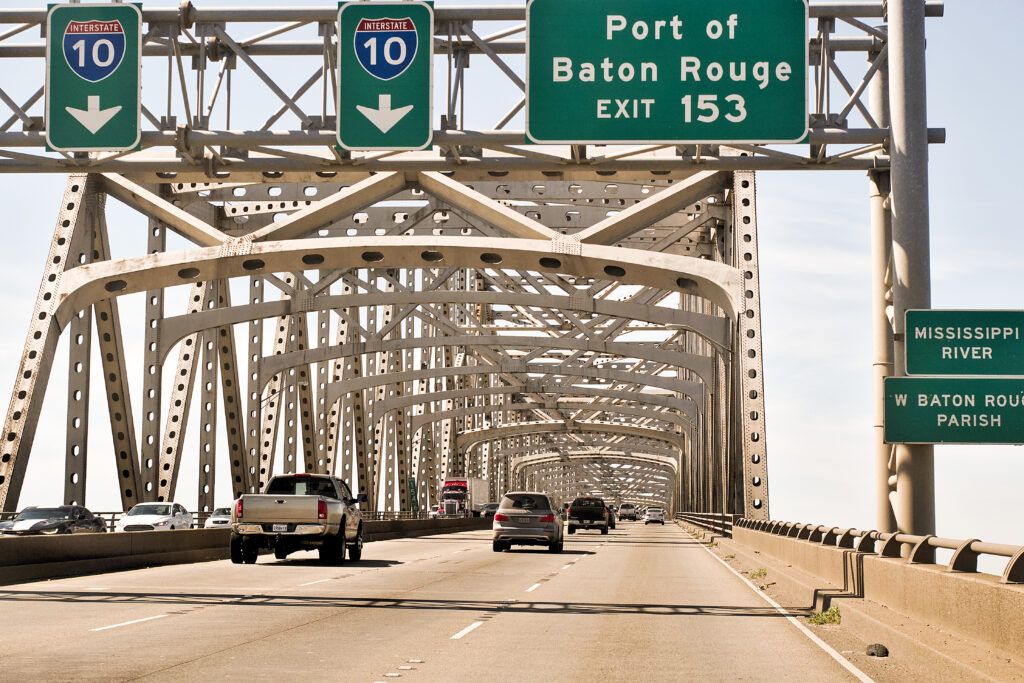
Sending I-49 south
In the oil and gas-dependent Houma/Thibodaux region, no infrastructure funding initiative is satisfactory unless it addresses the I-49 extension and completion of the LA 1 Improvement Project. That’s because the area badly needs a north-south corridor access route, not only for transporting goods and services but as an evacuation route.
Last fall, state and local officials officially broke ground on a key piece of the I-49 Lafayette Connector project, giving the area some hope that the interstate could be completed in the next several years. The $136-million Ambassador Caffery Parkway interchange will include elevated frontage roads, U-turn movements and widening the reconstruction of Ambassador Caffery to account for the new interchange.
The connector is a future 5.5-mile segment of highway that will extend I-49 from I-10 to the Lafayette Regional Airport. The connector is a key component of I-49 South, which will function as a critical hurricane evacuation route, complete a major energy and trade corridor to the nation and enhance safety by providing new interstate connectivity within the Lafayette region and to New Orleans.
Finishing the elevated sections of the La. 1 Improvement Project is equally important, as it would provide a critical route to Port Fourchon and the Louisiana Offshore Oil Loop (LOOP). There’s been progress there as well, as state leaders recently broke ground on Phase II of the La. 1 construction program, which will elevate 8.3 miles of the highway from Leeville to Golden Meadow. Once complete, there will be 19.3 miles of elevated expressway between Golden Meadow and Port Fourchon.
Unfortunately, the oil and gas industry in the region won’t benefit from the La. 1 project until the highway spans are complete. In the meantime, should the highway be incapacitated by a storm, the impact on the nation’s economy could be catastrophic.
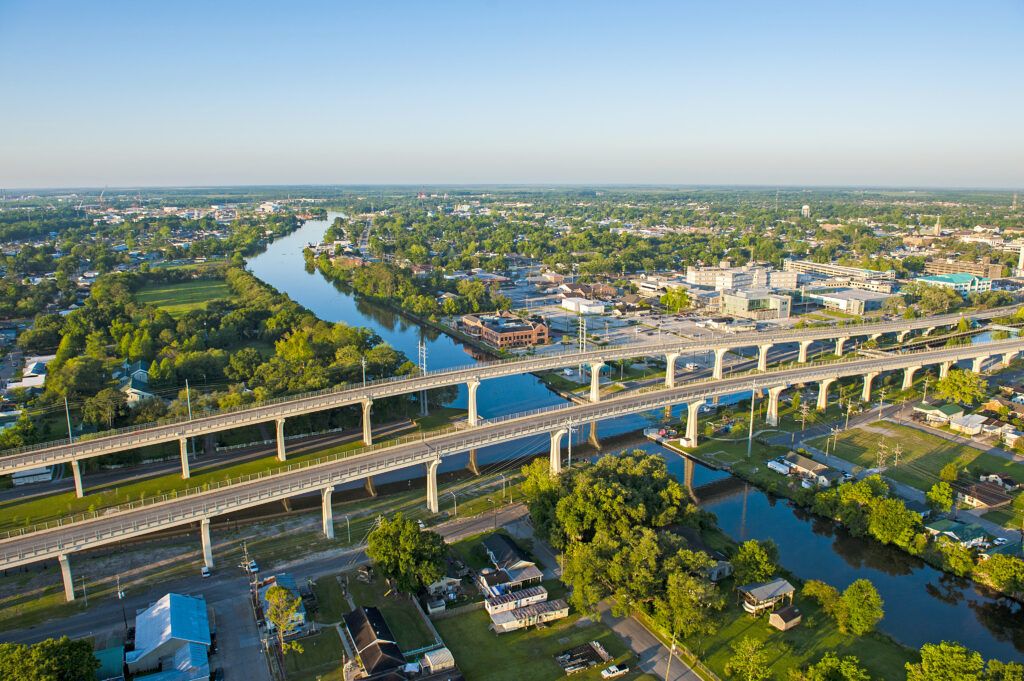
Power resilience
Electrical infrastructure resiliency in Louisiana has been top of mind ever since the storm-battered years of 2020-21. Without question, the task of restoring power in the wake of multiple catastrophic hurricanes was an unprecedented challenge for Entergy. Hurricane Ida alone damaged a record-breaking 30,000 power poles.
After making landfall near Fourchon, Ida traveled northward, wreaking devastation in countless communities along the way and significantly impacting the New Orleans and Baton Rouge metro areas. “
There were nearly 1 million customers without power,” says Phillip May, president and CEO of Entergy Louisiana. “Because of its path, Ida affected a very large number of customers.”

May says while the electrical infrastructure built since Katrina “weathered the recent storms quite well, we’re seeing an acceleration of storm severity and frequency … and that’s cause for concern.”
As such, last year Entergy Louisiana filed an “Entergy Future Ready” resiliency plan with the state Public Service Commission. The 10-year, $9.6 billion plan aims to replace electrical infrastructure across Louisiana with a newer, more resilient electrical grid. Entergy is also applying for grants under the Department of Energy’s Grid Resilience and Innovation Partnerships (GRIP) Program.
If given the green light, the project will touch more than 9,600 distribution and transmission projects across the state. “We have 1 million poles south of I-10, so the program will take a while,” May says. “It doesn’t mean that the power will never go out, but we’ll have the ability to quickly respond and get the power back on, particularly to our critical customers.
“Instead of taking weeks to get the system back up after a major hurricane or other event, we’ll be able to do it in days. That’s the objective of a more resilient grid.”
The first phase of the plan will call for $5 billion in resiliency enhancements over five years. May hopes to have a decision from the PSC by end of this year. “That would kick off the initial phase of the plan the first part of 2024,” he adds.
Entergy collaborated with utility providers in Florida for assistance in developing the plan. “We looked at all hurricane data over the last 50-plus years, including every transmission structure, pole, line or device and put together a model. We then had hurricanes track over the system to determine what damage we could expect on that system.
“We also executed accelerated storm scenarios. That’s how we prioritized and developed those 9,600 distribution and transmission projects.”
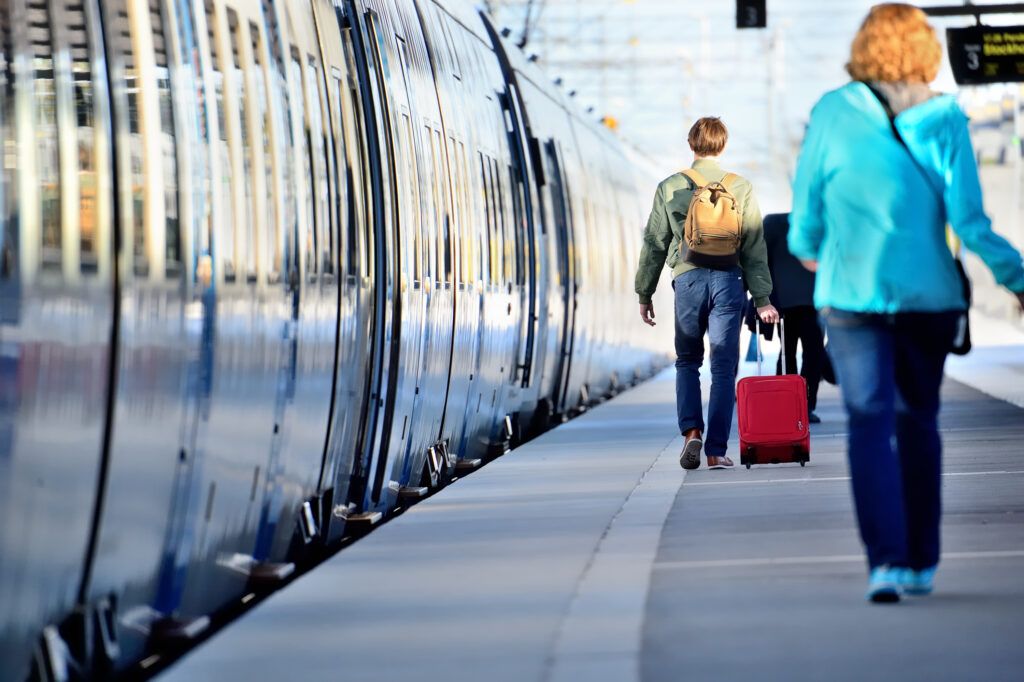
Ticket to ride
Like many of the state’s infrastructure needs, a proposed intercity passenger rail route between New Orleans and Baton Rouge has long been touted as vital for future commerce, but plagued by multiple stops and starts.
However, the Baton Rouge Area Chamber, GNO Inc., and the SOLA Super Region Committee are calling the recent approval of the Canadian Pacific Railway and Kansas City Southern merger the “most important step forward” for creating the long-proposed passenger rail link.
“The Surface Transportation Board decision specifically cited that CPKC has committed to supporting Amtrak’s plan for expanded passenger rail service, and that this helped win Amtrak’s endorsement of the merger,” the joint statement says.
The groups also pointed to Amtrak’s national statement on the announcement, which said that CP “has committed to support Amtrak’s efforts to work with the Southern Rail Commission, states and other stakeholders for … establishing Amtrak service between New Orleans and Baton Rouge.”
At the recent Southern Rail Commission quarterly meeting, representatives from the state’s transportation department updated stakeholders about federal funds the state is pursuing.
The state has hired consultants to begin the federally required environmental studies for the route and has also submitted a grant application for funding to help replace the Bonnet Carre bridge.
The project, which could top $260 million, already has a few funding sources. The federal Infrastructure Investment and Jobs Act, passed in 2021, supplied funding for Amtrak to further its 15-year corridor vision plan, including the proposed passenger rail between the Baton Rouge and New Orleans.
Last year, U.S. Rep. Garret Graves’ office announced that the Baton Rouge-to-New Orleans rail project would receive $20 million in federal funding for real estate acquisition, design and construction of the Baton Rouge and Gonzalez train stations.
The $20 million RAISE grant represents only a portion of the $36.95 million Baton Rouge and Gonzales have jointly sought in federal funding for the stations. Including local matches, the total cost for the two stations would be $46.6 million.
The Legislature last year also approved $12.5 million in unspent federal American Rescue Plan dollars to provide service between Baton Rouge and Sorrento.
THE INFRASTRUCTURE HIT LIST
Here’s a look at the top priorities for South Louisiana.
1. I-10 bridge, Lake Charles
In total, about $800 million has been allocated for the bridge. Unfortunately, the costs continue to escalate. Now at a cost of $1.5 billion, the public-private project will span from the I-10/I-210 west interchange to the east side of the Ryan Street exit ramp and will improve LA 378 from I-10 to Sulphur Avenue in Lake Charles.
2. New I-10 bridge south of Baton Rouge
Currently, the project is in Phase 2 of the environmental assessment, with the eventual location of the bridge narrowed down to three locations, all south of Plaquemine and crossing into St. Gabriel. The bridge will primarily service the industrial corridor south of Baton Rouge.
3. I-10 through Baton Rouge to the industrial corridor
The interstate system through Baton Rouge and points south remains a source of congestion and traffic slowdowns, significantly impacting the flow of people, goods and services to the industrial sector.
4. La 3127 Extension, Donaldsonville
The extension of LA 3127 around Donaldsonville along with other planned improvements are critical to supporting future investments.
5. St. Bernard Transportation Corridor
Future elevated expressway to route truck traffic from PortNOLA’s new Louisiana International Terminal to and from the facility. The port received $50 million in capital outlay bill last year from the state.
6. New Orleans-Baton Rouge Intercity Passenger Rail
Like many infrastructure needs in the state, an inter-city passenger rail has long been touted as a vital for future commerce, but little has been accomplished.
7. Electrical Grid Hardening
Entergy Louisiana has filed a 10-year, $9.6 billion plan – Entergy Future Ready – with the PSC that will replace existing electrical infrastructure with more resilient and durable equipment. Entergy is also applying for grants under the Department of Energy’s Grid Resilience and Innovation Partnerships (GRIP) program.
8. Port of Lake Charles’ Wind Power Preparations
The port already operates a facility just 23 nautical miles from the Gulf with no air draft restrictions and direct access to the federally maintained deep draft Calcasieu Ship Channel. That’s important, since turbine blades can measure from 350 to 425 feet.
9. I-49 Extension/LA 1 Improvements
In the oil and gas-dependent Houma/Thibodaux region, no infrastructure discussion is complete without addressing the completion of the LA 1 Improvement Project and I-49 extension, in the creation of a vital north-south route.

